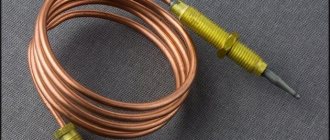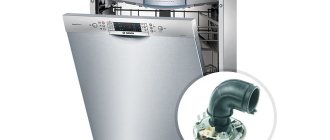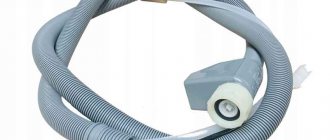Composition, properties and features of choosing thermal paste
Its multicomponent composition includes fillers from microdispersed powders of metals and their oxides, and synthetic and mineral oils are used as a binder.
We list well-proven brands of thermal pastes:
- KPT-8,
- AlSil-3,
- Titan Silver Grease,
- Cooler Master.
The main property of thermal paste for laptops is its high thermal conductivity, much better than that of air. Therefore, when a layer of this material is applied to the junction of the processor and the radiator, normal temperature conditions for the laptop are ensured. Without thermal paste or with old “stiff” substance, the processor will simply burn out.
A signal for the need to change the old thermal paste can be severe overheating of the laptop processor, even under a relatively light load.
You can choose both domestic brands (KPT-8 and AlSil-3) and foreign ones. According to their characteristics, they are identical, but imported ones are slightly more expensive. An additional advantage of domestic pastes is their relative ease of application, since the latter have a more liquid consistency.
If desired, the thermal paste recommended by the processor manufacturer can be found on its website. Usually the results of tests and testing of various pastes are posted there, specific recommendations are given on how to change them and choose the composition. Also try to purchase only high-quality materials for replacement, avoid too cheap ones, as they may turn out to be counterfeit.
Make sure that the composition of the paste is completely homogeneous - the presence of lumps and foreign inclusions in it is unacceptable, since air layers can form that impair thermal conductivity.
Which thermal paste to choose - read the characteristics?
- Thermal conductivity shows how well heat is transferred, measured in W/m*K, the higher the figure, the better. For office models, a paste with a value from 1.5 to 2 W/m*K is suitable; if the gadget is designed for games and heavy tasks, then it is better to choose the option with 4 W/m*K.
- Viscosity _ Optimal indicators are 160 - 450 Pa*s. Many companies do not indicate this parameter, but knowledgeable people say that it is easy to determine by touch. It should feel like a toothpaste - that is, not very liquid so that it does not leak, but not thick, otherwise the necessary contact between the surfaces may not be achieved.
- Thermal resistance is inversely proportional to thermal conductivity; the lower it is, the better the device cools.
- Operating temperatures . The indicator is indicated on the packaging and indicates at what operating temperature the substance will not lose its properties. If the device is gaming and is also being overclocked, then you should look for a high upper value. An excellent option is 150-200 degrees.
Is it worth buying a thermal pad?
First, let's define what a thermal pad is. This is a thin elastic sheet consisting of a base and filler. The base can be rubber or silicone. The latter has the best consumer qualities, but it all depends on the manufacturer and the quality of the materials used. Thermal pads should be stored for no more than a year, so only fresh products should be used. Chinese materials work for about a year and a half, after which they require replacement.
The most important thing is why and whether it is possible to use a thermal pad instead of thermal paste or vice versa. It is recommended to use the materials that the manufacturer himself uses . The thermal pad is indispensable if the distance between the cooling device and the radiator is large (about 1 mm). Otherwise, if you apply a thick layer of thermal paste to the chip instead of a gasket, the device will burn out. Below is a photo of a thermal pad that has dried out and requires replacement.
What happens if the paste dries out?
As soon as the thermal paste reaches the end of its shelf life , i.e. it has exhausted its resource, the processor temperature will increase as the efficiency of heat transfer decreases. This means the paste needs to be changed. If you remove the cooler, you can see that the paste has almost turned into powder. A little more, and your laptop would stop turning on, since the processor heats up to its maximum temperature even when loading. As a result, you can simply burn the “heart” of the computer.
@tehnichka.pro
BY THE WAY. You can monitor the increase in processor temperature using special programs. I installed AIDA64 for myself. It has many other functions, not just displaying the temperature of the internal components of the laptop.
@i2.wp.com
Life time
This indicator depends on what kind of interlayer was used during assembly or replacement. If the laptop is about 1 year old, it means that the composition was most likely made in Russia. Their lifespan does not exceed 5 years, and when used in a laptop it is significantly reduced.
GELID GC-Extreme has the longest service life of any thermal paste I know. A computer can work on it without problems for up to 10 years, but a small tube costs about 1,000 rubles.
@th-test-11.slatic.net
Rules and procedure for replacing thermal paste
The paste must be changed with the utmost care; it should not be smeared on electronic components and tracks, since it is a conductor due to the inclusion of metal chips. If you do not follow this rule, a short circuit may occur, which will cause the failure of important components of the laptop.
It is better to prepare all the materials and tools necessary for the work in advance. You will need:
- The thermal paste itself;
- Slotted and Phillips screwdriver;
- Unnecessary plastic card;
- A stationery knife and a soft napkin.
When choosing a rag or wipe for removing thermal paste, immediately discard materials with abrasive properties or those that leave pellets when used. Surface scratches and foreign inclusions due to poor removal of old material can significantly impair heat transfer.
How to replace thermal paste on a processor using the AMD method
We essentially discussed this method above when we talked about a drop of paste in the center. This method is relevant for AMD processors, since the core temperature is distributed evenly here. Therefore, thermal paste can be applied in the form of a dot or in a circle.
The point method, which is also called the “pea method,” is much better for AMD.
After spot-applying the paste, press it down with a radiator. Take a closer look and make sure there are no air bubbles. When using a normal radiator, there should not be any.
Sequence of actions when replacing thermal paste
You can change the paste only after disassembling the laptop case. Great care must be taken at this stage to avoid breaking the fragile plastic parts. This is done in the following sequence:
- Remove the battery from the laptop. You may need a screwdriver for this.
- In accordance with the instructions for the device, remove the back panel from it and clean the surfaces from dust.
- Using a napkin, remove any remaining old thermal paste from the surfaces of the processor and heatsink. Old thermal paste for laptops often becomes dull; use alcohol to soften it. But after this, the surfaces to be treated and the motherboard must be thoroughly dried. A regular eraser also works well even with dried paste.
- Apply a layer of new thermal paste to the cleaned surface of the processor. It should be uniform and only a few microns thick. You can’t just level the layer with your finger. There is fat on the skin, the penetration of which into the paste can significantly reduce its thermal conductivity. To apply a thin layer as a kind of “spatula”, it is better to use a plastic thin card or something similar.
Thermal paste must be changed in two stages: Squeeze a small amount of paste out of the tube onto one side of the processor; - Use a credit card to spread a thin, even layer over the surface.
At the final stage of assembly, it is important to correctly mount the cooling radiator. Make sure that when it comes into contact with the processor, the thermal paste does not squeeze out. This is possible if it was applied in too thick a layer. In the future, when carrying out the procedure for cleaning your laptop from dust, do not forget to pay attention to the condition of the thermal paste. If it dries out, the processor will quickly fail.
When should you change the thermal paste in your laptop? Main symptom and frequency
The most common sign of the need for repair is that the laptop becomes very hot. It will appear not only in games, but also when working with documents, when the load on the processor is not too great.
If you have the skills to work with a computer and the necessary materials, you can change the thermal paste yourself. Once a year.
How often do people who do not have the necessary knowledge and skills need to change the thermal paste in a laptop? In this case, this procedure should be carried out only if absolutely necessary, when the operation of the device becomes too unstable.
You can also note the following criteria for the frequency of composition replacement:
- if the laptop is used as an office device, then this should be done once every year or two years;
- if the system unit is used as office equipment, then the paste can be changed no more than once every three or four years;
- How often do you need to change the thermal paste in a laptop or system unit used as a gaming platform? At least once a year.
How to change thermal paste on a video card
Replacing thermal paste on a video card is practically no different from the replacement process on a processor.
On a PC, first of all, you need to remove the video card. Disconnect all wires that are connected to the video card connectors. Usually it is attached to the body with two bolts - unscrew them. Next, on the PCI slot into which it is inserted, you need to bend the latch and remove the graphics module.
- A radiator with a cooler is also adjacent to the video card processor. To remove it, you will need to unscrew the bolts or bend the clamps.
- If there is dust inside the case and on the board, be sure to remove it with a brush or a can of compressed air.
- To remove old thermal paste, you will need a cotton pad and alcohol. Carefully remove the layer of dried paste.
- Make sure the surface is completely dry.
- Apply a uniform and thin layer of the same thermal paste as on the general processor. We do this using a plastic card.
- We put the structure back together and insert it into the PCI slot.
Well, that's all, this process is not as complicated as it might seem.
To ensure better cooling of the laptop's video card processor, disassembly will also be required. The graphics module is located on the motherboard and is covered by a cooling system (cooler, copper tubes for heat removal). It all comes apart easily; the old paste can be cleaned with alcohol and cotton wool. A thin layer of thermally conductive mixture is applied.
Review of good thermal pastes
The price range for thermal paste is quite large - from 100 rubles to several thousand. It’s easy to get lost in such variety, so the best options in 2021 are offered below.
Important! Looking ahead, let's say that there is no particular point in buying pasta that costs more than 500 rubles. As they say in the reviews, it is good, but there will be no significant differences from the average price options, so it will be unnecessary to overpay.
Zalman ZM-STG2
It is supplied in a syringe, which is convenient for application, has a good consistency according to reviews, and is painted gray - it is very convenient for subsequent removal. The tube is enough for 5-6 processors. Completely safe for health, as well as for the internal components of the laptop (if it accidentally gets on them). Thermal conductivity – 4.1 W/m*K, retains properties at temperatures from -40 to 150 degrees. Service life – 1 year. Price – 450-500 rubles.
Titan Nano Grease (TTG-G30015)
One of the most affordable thermal pastes, it comes in small tubes, enough for 2-3 chipsets. Thermal conductivity – 4.5 W/m*K. The service life is no more than a year; according to reviews, it lowers the temperature by 10-15 degrees. Operating temperature from -50 to 240 degrees.
Important! The low price of 100 rubles is explained by the poor uniformity (there are lumps) and the fact that the paste is quite viscous. You have to apply it carefully to make a thin and even layer.
Arctic MX-2
Inexpensive pasta with a huge number of positive reviews. Supplied in a syringe, it has an excellent consistency. The manufacturer's website indicates a service life of 8 years. Heat conductivity – 5.6 W/m*K. The tube has a convenient shape that immediately provides a thin layer. Operating temperature up to 150 degrees. The average price for an 8 gram tube is 350 rubles. There are options with a lower dosage.
CBT 8
The thermal conductivity index is 2.0–5.0 kV/mm, depending on the heating temperature. The maximum permissible is 180 degrees. Has good consistency. The average price is 150 rubles. White color. The paste is completely safe and has been produced in Russia for more than 20 years. This is one of the most popular thermal pastes among domestic users. Service life – 5 years.
Coollaboratory Liquid PRO
Thermal paste from Germany with a thermal conductivity of 80 W/mK, such a high figure explains the expensive price tag. The paste is safe for health and the device, comes in 1 gram tubes and includes cotton swabs and a sponge for ease of application. Capable of lowering temperature by 20 degrees. Service life – 10 years. Price – from 800 rubles. According to user reviews, the paste is too expensive and it is not advisable to use it for office models.











